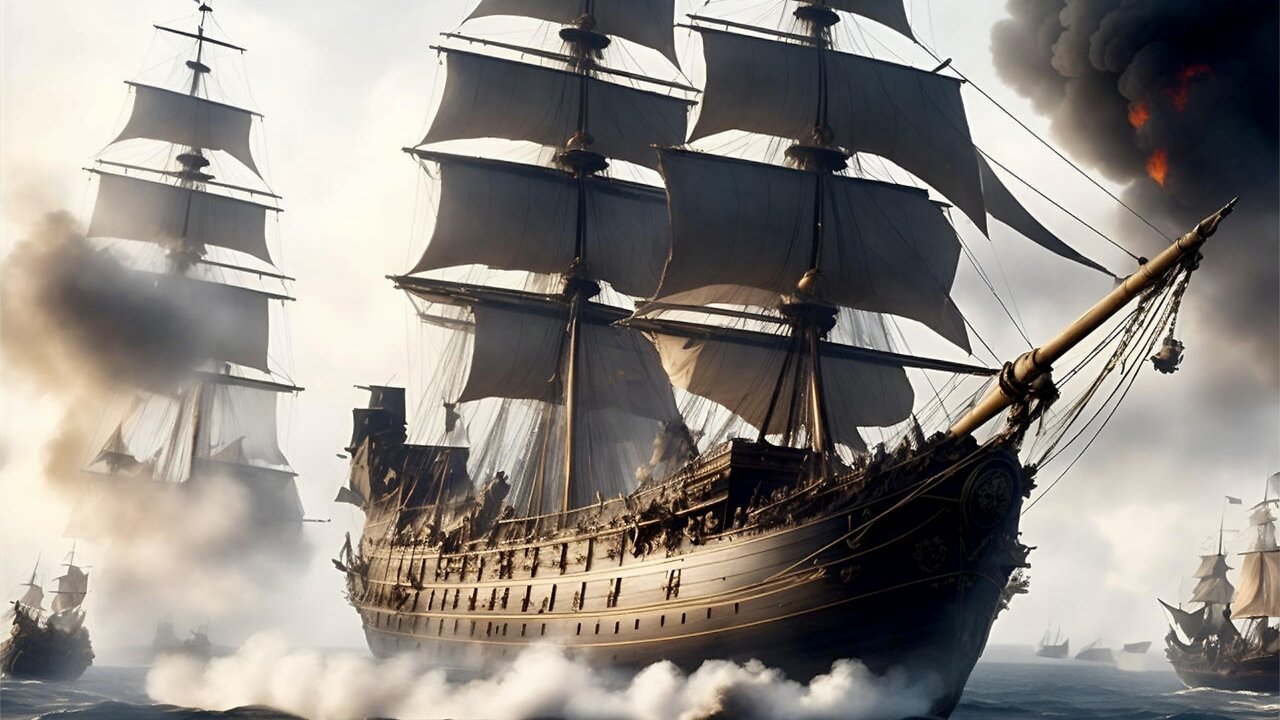Premium Only Content

History of the Dutch Colonial Empire - How Holland Ruled the Seas - Full Documentary
The Dutch colonial empire (Dutch: Nederlandse koloniale rijk) comprised the overseas territories and trading posts controlled and administered by Dutch chartered companies—mainly the Dutch East India Company and the Dutch West India Company—and subsequently by the Dutch Republic (1581–1795), and by the modern Kingdom of the Netherlands after 1815. It was initially a trade-based system which derived most of its influence from merchant enterprise and from Dutch control of international maritime shipping routes through strategically placed outposts, rather than from expansive territorial ventures. The Dutch were among the earliest empire-builders of Europe, following Spain and Portugal and one of the wealthiest nations of that time.
With a few notable exceptions, the majority of the Dutch colonial empire's overseas holdings consisted of coastal forts, factories, and port settlements with varying degrees of incorporation of their hinterlands and surrounding regions.Dutch chartered companies often dictated that their possessions be kept as confined as possible in order to avoid unnecessary expense, and while some such as the Dutch Cape Colony and Dutch East Indies expanded anyway (due to the pressure of independent-minded Dutch colonists), others remained undeveloped, isolated trading centers dependent on an indigenous host-nation. This reflected the primary purpose of the Dutch colonial empire: commercial exchange as opposed to sovereignty over homogeneous landmasses.
The imperial ambitions of the Dutch were bolstered by the strength of their existing shipping industry, as well as the key role they played in the expansion of maritime trade between Europe and the Orient. Because small European trading-companies often lacked the capital or the manpower for large-scale operations, the States General chartered larger organizations—the Dutch West India Company and the Dutch East India Company—in the early seventeenth century. These were considered the largest and most extensive maritime trading companies at the time, and once held a virtual monopoly on strategic European shipping-routes westward through the Southern Hemisphere around South America through the Strait of Magellan, and eastward around Africa, past the Cape of Good Hope. The companies' domination of global commerce contributed greatly to a commercial revolution and a cultural flowering in the Netherlands of the 17th century, known as the Dutch Golden Age. In their search for new trade passages between Asia and Europe, Dutch navigators explored and charted distant regions such as Australia, New Zealand, Tasmania, and parts of the eastern coast of North America.[6] During the period of proto-industrialization, the empire received 50% of textiles and 80% of silks import from the India's Mughal Empire, chiefly from its most developed region known as Bengal Subah.
In the 18th century, the Dutch colonial empire began to decline as a result of the Fourth Anglo-Dutch War of 1780–1784, in which the Dutch Republic lost a number of its colonial possessions and trade monopolies to the British Empire, along with the conquest of the Mughal Bengal at the Battle of Plassey by the British East India Company. Nevertheless, major portions of the empire survived until the advent of global decolonization following World War II, namely the East Indies and Dutch Guiana. Three former colonial territories in the West Indies islands around the Caribbean Sea—Aruba, Curaçao, and Sint Maarten—remain as constituent countries represented within the Kingdom of the Netherlands.
#history #interestingfacts #documentary
-
 11:45:14
11:45:14
Right Side Broadcasting Network
9 days agoLIVE REPLAY: TPUSA's America Fest Conference: Day Three - 12/21/24
231K26 -
 12:19
12:19
Tundra Tactical
6 hours ago $2.69 earnedDaniel Penny Beats Charges in NYC Subway Killing
15.6K3 -
 29:53
29:53
MYLUNCHBREAK CHANNEL PAGE
1 day agoUnder The Necropolis - Pt 1
72.9K42 -
 2:00:10
2:00:10
Bare Knuckle Fighting Championship
3 days agoCountdown to BKFC on DAZN HOLLYWOOD & FREE LIVE FIGHTS!
36K3 -
 2:53:01
2:53:01
Jewels Jones Live ®
1 day agoA MAGA-NIFICENT YEAR | A Political Rendezvous - Ep. 103
71.4K21 -
 29:54
29:54
Michael Franzese
10 hours agoCan Trump accomplish everything he promised? Piers Morgan Article Breakdown
87.6K45 -
 2:08:19
2:08:19
Tactical Advisor
13 hours agoThe Vault Room Podcast 006 | Farwell 2024 New Plans for 2025
166K11 -
 34:12
34:12
inspirePlay
1 day ago $4.94 earned🏆 The Grid Championship 2024 – Cass Meyer vs. Kelly Rudney | Epic Battle for Long Drive Glory!
71K8 -
 17:50
17:50
BlackDiamondGunsandGear
11 hours ago $1.70 earnedTeach Me How to Build an AR-15
46.1K6 -
 9:11
9:11
Space Ice
1 day agoFatman - Greatest Santa Claus Fighting Hitmen Movie Of Mel Gibson's Career - Best Movie Ever
107K45